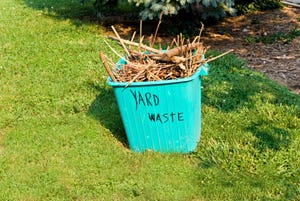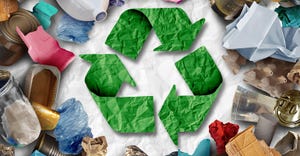A Look at How Minneapolis is Working to Achieve Zero Waste
The city of Minneapolis is progressing forward with its Zero Waste Plan, which was adopted by the City Council on December 8.

To achieve zero waste, municipalities, companies and organizations must develop a strategic and innovative plan that will reduce waste and increase recycling. And then, they must develop an implementation plan to make their zero waste plan a reality. This is exactly what the city of Minneapolis is doing as it progresses forward with its Zero Waste Plan, which was adopted by the City Council on December 8.
The plan was created by the city’s Zero Waste Project Team, which is comprised of staff from the Mayor’s Office, Council Member’s offices, the City Coordinator’s office, the Department of Public Works and the Department of Regulatory Services, and outlines a number of strategies to meet the goal of recycling and composting 50 percent of citywide waste by 2020 and 80 percent by 2030.
“The overarching theme in this Zero Waste Plan is focusing on the sectors outside of residential,” says David Herberholz, director of solid waste and recycling at the City of Minneapolis Department of Public Works. “We know very little about the other sectors because we don’t have the data, but we will be asking more of our businesses and haulers going forward to ensure that they are complying with city ordinances and state laws and providing the services they are supposed to be providing. Once we find out the data for the commercial, industrial and multifamily sectors then we can get to work on developing strategies and moving the dial on waste diversion in those areas.”
In the city of Minneapolis, 50 percent of residences receive collection services from the city and the other 50 percent receive collection services from a consortium of haulers. Because of this, the city is able to collect data and identify waste diversion strategies for the residential sector. The commercial, industrial and multifamily sectors, however, receive collection services from a variety of haulers because the city has an open market system.
Currently, there is not one department or entity responsible for the commercial, industrial and multifamily sectors so in order to try and get a better idea of what other peer cities have done to try and increase data collection and transparencies on things like rates, the city called upon engineering, architecture, construction, environmental and consulting solutions firm Burns & McDonnell in 2016 to complete a Commercial Waste Collection Evaluation Study. The study, which was released in May, includes research on possible pathways to increase diversion of commercial, industrial and multifamily waste through alternative commercial collection programs and approaches.
“The study provided a basis for developing the city’s Zero Waste Plan,” says Bob Craggs, department manager of solid waste and resource recovery and environmental global practice at Burns & McDonnell. “As a follow-up to the study, we facilitated the work done by the city’s team and provided a perspective on some best practices to help the city draft its Zero Waste Plan. We also participated in the stakeholder engagement processes, which are critical to the city.”
The plan itself includes a number of waste reduction strategies, and now the city has until June 1, 2018, to develop an implementation plan for 2019-2021. In 2021, and every three years thereafter, the city will provide an update on what’s been achieved from the current implementation plan and what the steps are for the next three years.
“We’ve had a significant increase in organics over the past year due to the residential curbside collection organics program now being citywide, but we’ve seen a slight reduction in both recycling and waste generation,” says Kellie Kish, recycling coordinator for the city of Minneapolis. “In 2016, we had a 37 percent diversion rate for the residential sector, and we are hoping that number will continue to be higher this year and for years to follow as we work to implement the strategies highlighted in the Zero Waste Plan.”
As the city works on its implementation plan, it’s also preparing for China’s waste import ban to take effect. The ban will affect the city financially because its contract is based on regional markets, which are currently declining. However, Eureka Recycling, one of the recycling companies the city works with, is able to market about 90 percent of the materials in its materials recovery facility within the Midwest area so very little of what’s being collected is being exported outside of the area, according to Kish.
“About five years ago, we switched to single stream recycling, and our residents have become very good recyclers over the years because of that switch,” says Kish. “For residential recycling, the contamination rate is around 7 percent, and we’re continuing to lower that number by providing residents with additional access and opportunities through new programs and strategies identified by the Zero Waste Plan. We have a very good recycling infrastructure here in Minneapolis so we have very little concerns right now compared to other cities and states that are starting to landfill materials like mixed paper and cardboard. The ban will have some effect on us, but we are confident that we will be able to deal with the current and future ups and downs of recycling because we have done so in the past.”
About the Author
You May Also Like


